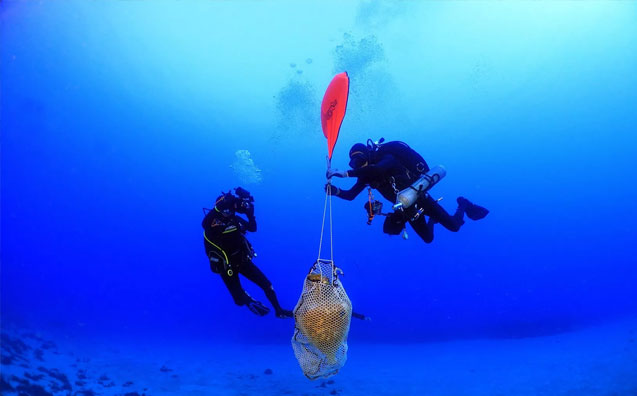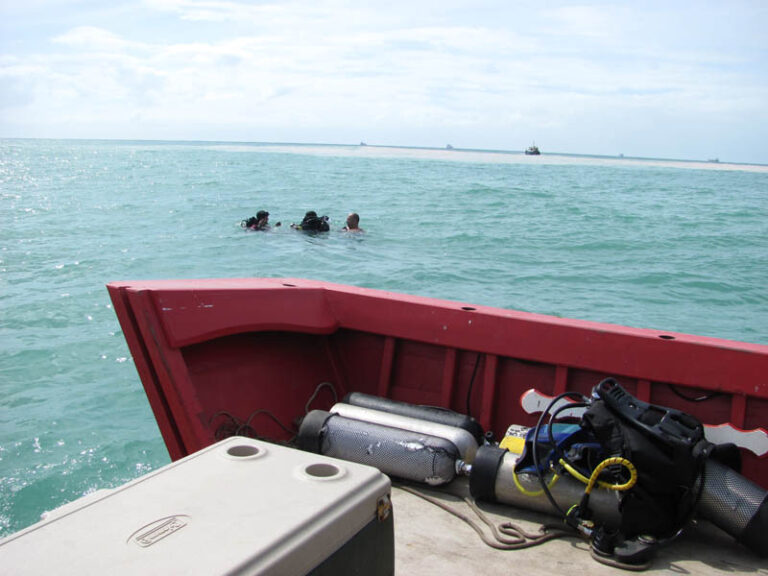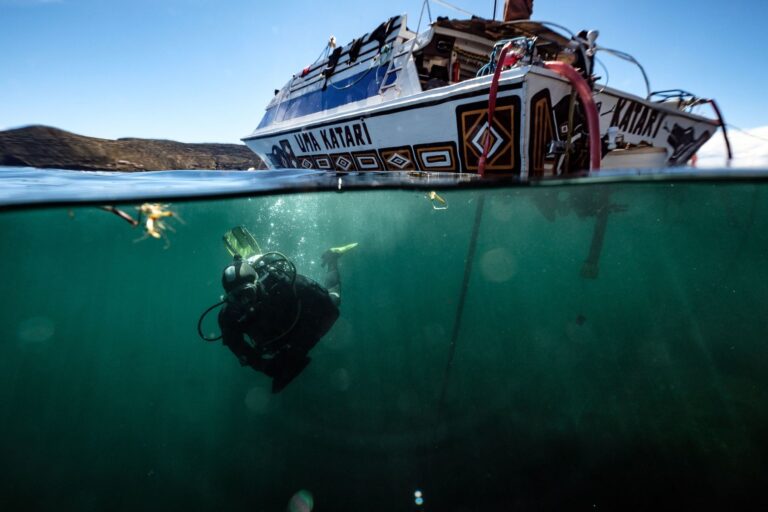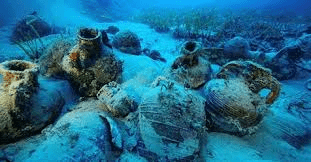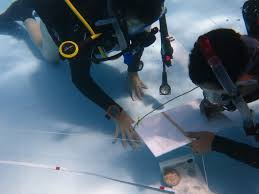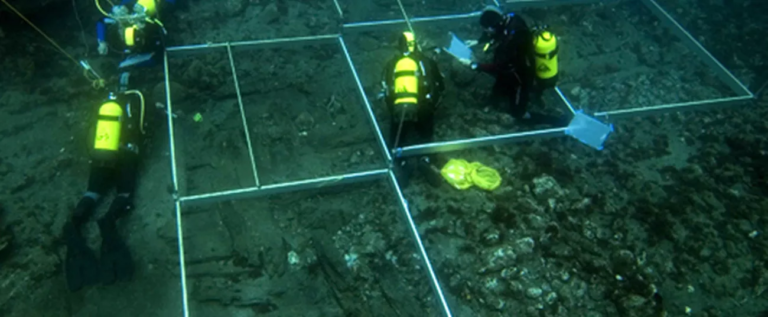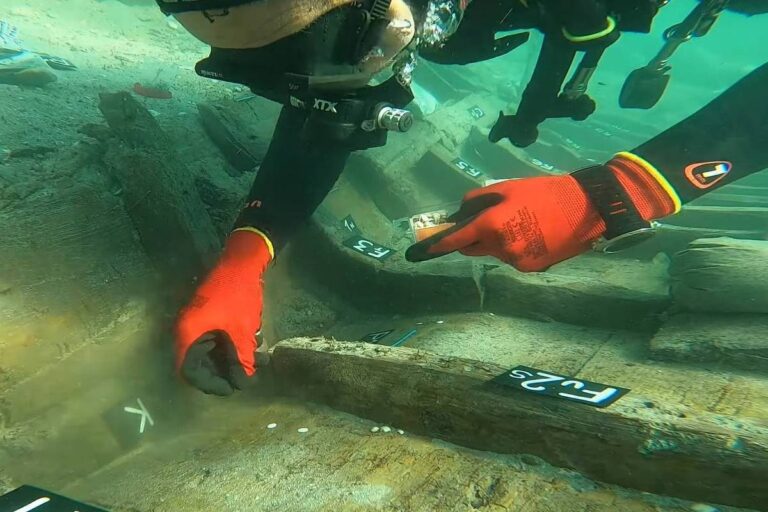Technological Innovations Revolutionizing Underwater Archaeology
Underwater archaeology plays a pivotal role in uncovering and preserving submerged cultural heritage. The exploration of underwater archaeological sites and artifacts allows us to gain valuable insights into ancient civilizations and their historical significance. In recent years, technological advancements have revolutionized this field, enabling underwater archaeologists to make groundbreaking discoveries and overcome numerous challenges. This article will explore the importance of underwater archaeology, discuss the recent advancements in technology that have driven significant changes in the field, and provide an overview of the article’s structure.
Table of Contents
Overview of Underwater Archaeology
Underwater archaeology is a fascinating field that focuses on the exploration, documentation, and preservation of submerged cultural heritage. It involves the study of underwater archaeological sites and artifacts, which have the potential to provide valuable insights into our history and culture. This branch of archaeology plays a crucial role in uncovering submerged remains that have been hidden for centuries.
The significance of underwater archaeological sites and artifacts cannot be overstated. These submerged treasures provide a unique and invaluable window into the past, offering a wealth of information about ancient civilizations, trade routes, and maritime history. From shipwrecks to sunken cities, these underwater sites hold important historical and cultural significance, allowing us to piece together the stories of our ancestors.
However, underwater archaeologists face numerous challenges in their work. The underwater environment presents a multitude of obstacles, including limited visibility, underwater currents, and logistical difficulties. Equipment and technology solutions are required to address these challenges and enable efficient exploration and data collection. Additionally, the fragile nature of underwater artifacts requires special care and preservation techniques to ensure their long-term survival.
Despite the challenges, recent advancements in technology have revolutionized underwater archaeology. From remote sensing techniques and advanced diving equipment to underwater imaging and DNA analysis, these technological innovations have greatly enhanced the field’s capabilities. By harnessing these innovative tools, underwater archaeologists can now explore deeper and more remote underwater sites, capture detailed images, and extract valuable data from underwater artifacts.
In conclusion, underwater archaeology is a field that strives to uncover and preserve our submerged cultural heritage. It plays a vital role in unraveling the mysteries of the past and contributes to our understanding of human history. The advent of technological innovations has brought unprecedented advancements to underwater archaeology, allowing for more accurate and efficient data collection, preservation of sites, and potential collaborations across different disciplines. As we continue to push the boundaries of technological possibilities, the future of underwater archaeology holds great promise for further discoveries and revelations.
Technological Innovations in Underwater Archaeology
Underwater archaeology has undergone a remarkable transformation in recent years, thanks to the advancements in technology that are revolutionizing the field. These technological innovations have paved the way for uncovering submerged cultural heritage with unprecedented accuracy and efficiency. In this section, we will explore some of the key technological innovations that have been driving these groundbreaking changes.
1. Remote Sensing Techniques: One of the major advancements in underwater archaeology is the use of remote sensing techniques. Sonar technology, for instance, has enabled archaeologists to map underwater features with precision by emitting sound waves and measuring their reflections. Magnetometers, on the other hand, are instrumental in detecting submerged artifacts by detecting variations in the magnetic field. Multibeam echosounders provide detailed seabed imaging by emitting multiple sonar beams simultaneously, allowing for a comprehensive understanding of the underwater landscape.
2. Advanced Diving Equipment: The introduction of advanced diving equipment has revolutionized underwater exploration. Closed-circuit rebreathers offer divers the ability to explore underwater for extended durations by recycling the exhaled air and removing carbon dioxide. This development has significantly enhanced the efficiency of data collection in underwater archaeological sites, as divers can stay submerged for longer periods. Lightweight and portable dive gear has made it easier for archaeologists to navigate and access challenging underwater environments. In addition, remotely operated underwater vehicles (ROVs) and autonomous underwater vehicles (AUVs) are used to collect data efficiently, providing a wealth of information about submerged sites without the need for human divers.
3. Underwater Imaging and Photogrammetry: High-resolution cameras play a crucial role in capturing detailed images of underwater structures, allowing archaeologists to examine them remotely. These images are often used in photogrammetric methods, which reconstruct three-dimensional models of submerged sites. Photogrammetry has become an essential tool in underwater archaeology, enabling researchers to create accurate and immersive representations of archaeological sites. Furthermore, the use of underwater drones equipped with cameras has become increasingly common, allowing for efficient documentation and exploration of underwater environments.
4. DNA Analysis and Environmental Sampling: DNA analysis has become a valuable technique in underwater archaeology. By analyzing the DNA of underwater artifacts, researchers can trace their origin and historical context, shedding light on trade routes and ancient civilizations. Additionally, environmental sampling techniques are crucial for studying changes in underwater habitats and understanding their impact on submerged heritage sites. Ongoing research focuses on ancient DNA preservation in underwater environments, opening up new possibilities for uncovering hidden histories and unraveling mysteries.
The technological innovations in underwater archaeology are transforming the way we explore and understand our submerged past. These advancements not only offer improved accuracy and efficiency in data collection, but also contribute to the preservation of submerged heritage sites for future generations. With interdisciplinary research collaboration and ongoing developments, the field of underwater archaeology is poised to make even more remarkable discoveries. However, it’s important to consider the ethical implications and challenges that arise in underwater archaeology, such as ensuring the responsible and respectful treatment of cultural heritage. By supporting and exploring these advancements in underwater archaeological technologies, we can continue to unlock the secrets of our submerged past and preserve our shared human history.
Case Studies: Revolutions in Underwater Archaeology
1. The Antikythera Shipwreck
The Antikythera Shipwreck is one of the most significant underwater archaeological sites ever discovered. Using remotely operated underwater vehicles (ROVs) and advanced imaging techniques, archaeologists were able to uncover a treasure trove of ancient artifacts. This shipwreck, which dates back to the 1st century BC, contained valuable statues, pottery, and even a complex mechanical device known as the Antikythera Mechanism. The use of cutting-edge technology enabled researchers to conduct a detailed analysis of this fascinating artifact, revealing its purpose and mechanisms.
2. The RMS Titanic
The sinking of the RMS Titanic in 1912 has captivated the world for over a century. With recent advancements in underwater archaeology, researchers have been able to explore the wreckage in unprecedented detail. By applying photogrammetric methods, a comprehensive 3D model of the Titanic’s remains has been created. This allows archaeologists to study and preserve the site in a much more accurate and immersive way. Additionally, remote imaging systems have been utilized to map the debris field surrounding the ship, providing valuable insight into the events that led to its tragic sinking.
3. The Underwater City of Heracleion
The discovery of Heracleion, also known as the lost city of Cleopatra, has been a game-changer in the field of underwater archaeology. Through the use of advanced underwater cameras and mapping technology, researchers were able to uncover this ancient city that had been submerged for over 1,200 years. The role of environmental sampling in understanding the historical context of the site cannot be overstated. By analyzing sediment samples and studying the changes in underwater habitats, scientists have gained valuable insights into the civilization that once thrived there.
These case studies highlight the revolutionary impact of technological innovations in underwater archaeology. They showcase the power of ROVs, advanced imaging techniques, photogrammetry, and underwater cameras in uncovering and preserving submerged cultural heritage. By utilizing these cutting-edge tools, the field of underwater archaeology has experienced a paradigm shift, enabling researchers to explore, document, and understand historical sites in ways never before possible. The continued development of underwater archaeological technologies holds great promise for future discoveries and the preservation of our rich underwater heritage.
Benefits and Future Implications
Technological innovations in underwater archaeology have brought about numerous benefits and future implications for the field. One of the most significant advantages is the improved accuracy and efficiency in archaeological data collection. With the introduction of remote sensing techniques such as sonar technology, magnetometers, and multibeam echosounders, researchers are now able to map underwater features, detect submerged artifacts, and obtain detailed seabed imaging. These advancements have revolutionized the way underwater archaeologists gather data, making the process more precise and time-saving.
Moreover, these technological innovations also contribute to the preservation of submerged heritage sites for future generations. By utilizing advanced diving equipment such as closed-circuit rebreathers, lightweight and portable dive gear, as well as remotely operated underwater vehicles (ROVs) and autonomous underwater vehicles (AUVs), archaeologists can explore underwater sites for longer periods and collect valuable information without causing damage to the delicate underwater environment. This not only ensures the protection of valuable historical artifacts but also allows future researchers to study these sites with new advancements in technology.
The integration of underwater imaging and photogrammetry has also opened up significant possibilities for the field. High-resolution cameras can capture detailed images of underwater structures, while photogrammetric methods enable the reconstruction of 3D models of submerged sites. The use of underwater drones equipped with cameras further enhances the efficiency of documenting these sites. These advancements enable archaeologists to study underwater heritage in unprecedented detail, expanding our knowledge of past civilizations and their interactions with the marine environment.
The advancements in DNA analysis and environmental sampling have also provided new avenues for research in underwater archaeology. DNA analysis of underwater artifacts can trace their origin and historical context, shedding light on trade networks and human migration patterns. Environmental sampling techniques help scientists study changes in underwater habitats and understand the impact of past civilizations on the marine ecosystem. Ongoing research on ancient DNA preservation in underwater environments holds the potential for further discoveries and a deeper understanding of our history.
With these advancements, there is also an increased potential for interdisciplinary research collaboration and new discoveries. The combination of underwater archaeology with fields such as marine biology, geology, and climatology allows for a more comprehensive understanding of the past and its relationship with the present. The exchange of knowledge and expertise between different disciplines can lead to groundbreaking discoveries and interpretations, enriching our understanding of our shared heritage.
However, it’s important to mention that along with these benefits, there are also ethical considerations and challenges in underwater archaeology. The preservation and conservation of underwater sites must be prioritized to ensure the protection of cultural heritage. Balancing the need for scientific research with the ethical responsibility of preserving these sites can be a delicate task. Additionally, underwater archaeologists face challenges such as limited funding, limited access to technology, and the risk of looting and illegal excavation. These challenges need to be addressed to fully harness the potential of technological innovation in underwater archaeology.
In conclusion, technological innovations are revolutionizing underwater archaeology by significantly improving the accuracy, efficiency, and preservation of archaeological data collection. These advancements offer numerous benefits, including the preservation of submerged heritage sites, interdisciplinary research collaborations, and the potential for new discoveries. However, ethical considerations and challenges must also be taken into account as the field continues to develop. It is crucial to support and explore advancements in underwater archaeological technologies to unravel the secrets hidden beneath the depths of our oceans and ensure the preservation of our shared human history.
Conclusion
In conclusion, the field of underwater archaeology is undergoing a revolutionary transformation due to technological innovations. These advancements have significantly improved the accuracy and efficiency in the collection of archaeological data, allowing for a better understanding of submerged cultural heritage.
The use of remote sensing techniques such as sonar technology, magnetometers, and multibeam echosounders has enabled archaeologists to map underwater features, detect submerged artifacts, and obtain detailed seabed imaging. This has greatly enhanced the ability to identify and document underwater archaeological sites and artifacts.
Moreover, the development of advanced diving equipment, including closed-circuit rebreathers and lightweight dive gear, has facilitated prolonged underwater exploration. Remotely operated underwater vehicles (ROVs) and autonomous underwater vehicles (AUVs) have also played a vital role in efficient data collection by capturing high-resolution images and videos of underwater structures.
Additionally, underwater imaging techniques and photogrammetry have allowed for the creation of detailed 3D models of submerged sites. Advanced cameras and underwater drones equipped with cameras have further improved the documentation process.
Furthermore, the application of DNA analysis and environmental sampling techniques has helped archaeologists trace the origins of underwater artifacts and study changes in underwater habitats. Ongoing research on ancient DNA preservation in underwater environments holds great promise for future discoveries.
Case studies such as the Antikythera Shipwreck, the RMS Titanic, and the Underwater City of Heracleion have demonstrated the immense potential of these technological innovations. The use of ROVs, advanced imaging techniques, photogrammetry, and underwater cameras has resulted in the uncovering of ancient artifacts, the creation of comprehensive 3D models, and the mapping of debris fields.
The benefits of these technological advancements in underwater archaeology are evident. They offer improved accuracy in data collection, preservation of submerged heritage sites for future generations, and the potential for interdisciplinary research collaboration. However, it is essential to consider the ethical challenges that come with underwater archaeology, such as the preservation and protection of these delicate underwater ecosystems.
In conclusion, the future outlook for underwater archaeology is promising. Continued exploration and support for advancements in underwater archaeological technologies will undoubtedly lead to new discoveries and a deeper understanding of our historical past. It is an exciting field that continues to push the boundaries of what we can uncover from the depths of the ocean.

